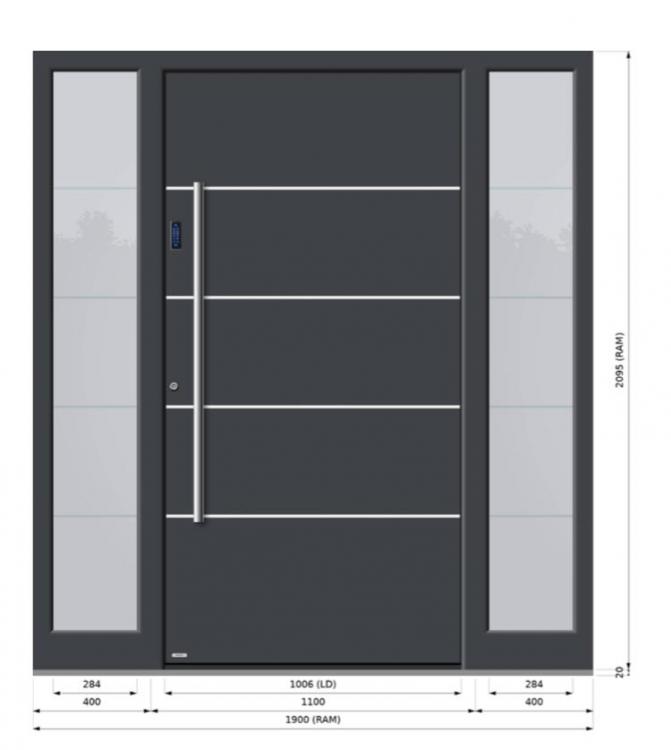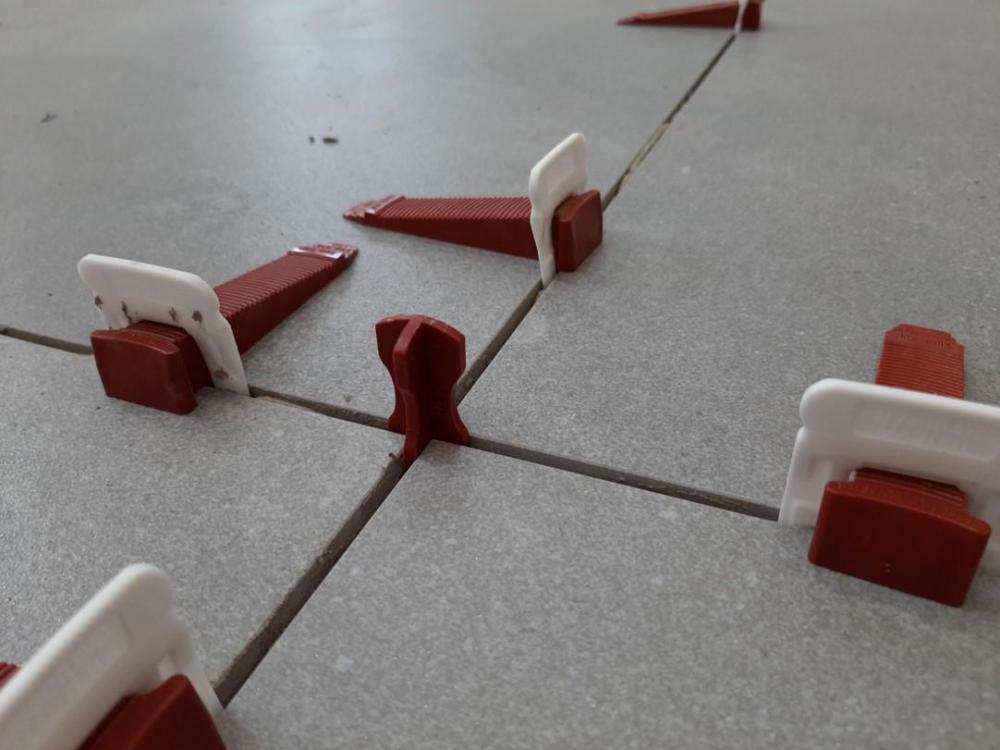Leaderboard
Popular Content
Showing content with the highest reputation on 10/02/20 in all areas
-
2 points
-
2 points
-
if you are doing this I would say do a fan as a matter of course. I wrote a series of 6 posts about the conversion of my downstairs bathroom for my mum two years ago, covering what. Perceive t9 be all the issues that details of all the kit I used Here is the index article2 points
-
2 points
-
I have occasionally done things by going to visit the regional office near me - especially where I want to have particular things explained, and reference several docs. But I have not done LR stuff since 2017 or so, and COVID has affected it in god-knows-what ways. It all helps to short circuit the thing that always worry me most about LR - which is getting something not quite right on a form and being told much later to go back and start again.1 point
-
this has been on threads before with HMRC arguing about when the three months start so make sure you get it right (search fir VAT threads).1 point
-
I think the law is you need to give the first roofer a chance to put it right? last thing you want/need is him taking you to court. So the angle I'd imagine you need to take is being perceived to give him a chance, but maybe give him so much work to put right that he doesn't want to come back1 point
-
@Simplysimons original comment was meant as in - build the frame from i joists I think. Wasn't exclusively referring to floors1 point
-
Had the roof checked by another roofer today and he discovered: 1. The valleys were all rough and a bit cracked. He said if someone did that on a building they'd told to go home. 2. The first roofer had forgotten to take the backing off the glued sections of the dry ridge material over a 14 metre section, so it wasn't stuck to the roof at all. 3. One section of the dry ridge has large gaps in so need to reposition the tiles to tighten it up. So I'm thinking I'm not going to pay the original roofer his full price. Not paying for the valleys at all.1 point
-
make a rack and put wicker baskets, or champagne boxes in the holes. You will be able to keep anything you want in them.1 point
-
I hear what you are saying. But his problem is one room takes forever to heat up. That room has plenty of flow, nearly twice the calculated required flow, and it is still taking ages to heat up. The other rooms even with very much reduced flow seem to be heating up okay. So yes in an ideal world you need to persist with balancing it so all rooms heat up at the same rate. BUT the main issue is why is this room taking so long to heat up, and I would say we have proved it is not a balancing issue so for the moment I see no point persisting with that line of attack. I would next be using an IR thermometer to see the actual floor temperatures of the different rooms. My guess is the problem room will have a very much lower floor temperature due to the floor make up in that room not conducting heat very well.1 point
-
Yes, as that needs to discharge into a trapped gulley, eg so stench doesn’t emit from ground level. The black / foul connection needs to be unhindered flow to the sewer and any rising stench needs to be dealt with by the ( new ) foul stack getting to the upper floor to collect the new WC but then continuing upward to soffit height and then being open to atmosphere to 1) vent the sewer gasses, and 2) allow an influx of air to alleviate the vacuum deficit created in the pipe by flushing the upper WC. That air admittance stops any connected traps ( including the water level in the WC itself ) from being ‘sucked’ dry by said vacuum. Easy this plumbing lark, ain’t it1 point
-
build with i beams and not timber, more stable, less weight and less timber, win, win, win.1 point
-
Well the design document you posted near the start of the thread only called for a flow rate of just over 2L/min, so if you are getting 4 that is good. I don't think you can have too much. So it must come down to the floor covering not letting enough heat through, or the room having a higher than expected heat loss.1 point
-
just to be clear on this, it is government meddling that has made energy so cheap for the last century https://www.eesi.org/papers/view/fact-sheet-fossil-fuel-subsidies-a-closer-look-at-tax-breaks-and-societal-costs A reduction in meddling will drive up prices.1 point
-
1 point
-
1 point
-
1 point
-
? Black with SPARKLES! - just wait until the bubble wrap is all off ( and my winch doesn't fail and smash it )1 point
-
A number of faux pas here chaps. 1, you can’t discharge yesterday’s vegetable madras into a gully pot as it will have a trap. 2, you cannot connect to the existing waste pipe work as they’re all gravity and the SF discharge at ~0.7 bar. 3, Also, look at the Saniflow installation instructions. Page 5 and you’ll see that when you pipe down independently to the ground level ( after altering the groundwork’s to accept the foul discharge directly ) you will need to have a vertical riding pipe also with a suitable air admittance valve to stop the chuffing thing syphoning out ( ever heard the noise a kid makes in McDonalds when they get to the end of the milkshake )....,. And how did you arrive at the 4-figure sum fir the stack? Did you get a quote or is the old ‘assumption’ being made? That’s a 4-figure job, including adding the rising soil pipe and alterations to the groundwork’s so the rainwater can still have a trapped fully, but £1500-1800 max.1 point
-
My thoughts: ? Looking at the plan, I wonder whether it might be easier to just hinge the door the other way which would save hacking around with the frame - a 762mm door should hinge fine into 830mm. I would possibly put a "catch and hold" door holder-opener on it, like this: https://www.amazon.co.uk/gp/product/B07CLWN3CS/ For the loo, I think I would put it under the window facing along the bathroom, as even with the Sani Compact the 400mm clearance to the bath is still really tight - I think they like 750, and 510 is the required minimum (though no one is going to jump on you for it unless it is subject to rental regulation in one of the more tickboxy places). And I think I would fit a pedestal basin to give for leg clearance when sitting on the loo, and then a carefully chosen wall cabinet for storage. And perhaps a shower over the bath, plus a screen. Is there somewhere to hang a towel, and a radiator? (Might be an argument for outward-hinged door). How are you ventilating? One of my hobby horses is fans with a backdraft shutter. Ferdinand1 point
-
Did you get a quote to connect to the sewer? I would be very surprised if it runs to thousands.1 point
-
Heatmiser neo stat v2, UH8 system, individual room wired thermostat's.1 point
-
1 point
-
A genny may come in handy for other things too remember. Are you a costco member as they do a site one for reasonable money IIRC1 point
-
1 point
-
Inflation, oil running out, profiteering, upgrading networks, tax, draughts, increasing demand .....1 point
-
In my case I have a 12m long double glazed conservatory on the south side of the cottage with solar glass in the roof. Many told me on here I would over heat and yes in the middle of summer it did get to 35’ ( people pay to go on holiday to places that hot!!!) but I have large openable windows and doors so venting was achievable and we usually have a breeze. The bifolds into the kitchen and lounge can either be open (to heat the house) or closed to stop the house over heating or closed to stop house heating wasted in the conservatory and this works very well. In the shoulder months when the sun shines the conservatory heats the house and is a lovely place to sit. we have MVHR but like to open windows in the summer for the breeze and birdsong so I switch it off. In colder weather it’s on to give us fresh pre warmed air and no draughts.1 point
-
Morning, you only need to wait to back fill the basement, you can get on with the ICF walls withing a few days of the pour.1 point
-
I thought the point of MVHR is that fresh air is being brought in continuously so you wouldn't want to open the windows. If you have MVHR and feel the need to open windows then the MVHR isn't set up correctly.1 point
-
The water is very hard here and the softener I use removes all the hardness. The anode for the Genvex is magnesium and cost £102 all in from the UK, although they are cheaper from Europe.1 point
-
Most domestic systems just use mains pressures; you have a separate and larger pipe and the mains pressure does the job. I think you have 0.5bar and a big pipe. 90% of domestic fires only activate a single sprinkler. http://www.ultrasafe.org.uk/wp-content/uploads/2013/01/Water-Protocal-Doc-V2.pdf Talk to a respected local company for15 minutes, and they will give you the gen. It’s really not as exotic as it may sound. Some places (Wales) fit them by law in all new builds. F1 point
-
Thank you for you post Carrerahill. Very refreshing. The SER (Ltd) scheme is worth a bit more scrutiny, in particular in relation to the self build / house extension market in Scotland. I also appreciate the R_Sole's contribution, both Carrerahill and the Sole make good points. Broadly speaking there are two approaches to this..and it's partly about the money. Here is a bit of a summary. 1/ Much depends on what council area you are in.. if you submit calculations instead of an SER (Ltd) certificate building control will either get their own in house Enginneers to check the calcs or contract it out.. often to the same set of SER Engineers! When you prepare calculations (old school) you present them in the same format that the SER Engineers use. An SER Engineer should be doing the same amount of work, calculations, checking stability and so on as someone who is not SER registered. If not why not? Are other Enginners from Wales, England, France etc less capable / dilligent. Carrerahill perhaps alludes to this. 2/ It's horses for courses. If you look carefully at some of the SER quotes that have been posted on this site they are a bit vague. What are you actually getting for you money? Dig a bit deeper and you'll see that a lot of it is an audit process. There are two schools of thought here. The SER scheme makes much of how their members are highly experienced, this is true and for large projects you may want an SER member just to get it over the line in Scotland. But for a self build, extension etc you have an alternative. Consider the traditional route, as accepted in the rest of the UK. You'll also find that the "old school" folk also talk to the council Engineers on a regular basis as the council Engineers use this as part of their CPD and this gives weight to Carrera's point that the process in certain council areas is often not slowed down significantly. You BC officer, along with the council's Engineers will require a detailed set of drawings and calculations from the Engineer. Yes, this may cost you more on appearance but these drawings along with a good specification can form the basis of your contract with the builder, your SER certificate is of less use. This is where you will realise savings unless you pay your Architect to produce a full set of contract / construction drawings, specification and so on. But when you combine (coordinate) a good set of Engineer's drawings with the Architect's drawings (and they work closely together) it can be a good package which can save you money. Also ask, is it beneficial to have an independant check made by the council Enginneers who have no commercial interest. If an SER certificate is presented then the council have to accept this, even if they have reservations. 3/ If you go down the traditional route your Engineer will often have a much more hands on approach and be on tap when you need them. They will for example produce the panel drawings for the timber frame as the council Engineers want to see these. This allows you to get a local joiner to build the kit so you don't need to go to a main stream manufacturer or you can make the kit yourself. There are other benefits in that the Engineer will work often work much more closely with you and your Architect to make sure the structure really fits in with the vision. Yes, you need to pay apparently more up front. But ask this.. if you go to a main stream kit manufacture say, they have their own in house designers and they need to be paid too. That cost is hidden in the kit price for example. In summary, it's worth exploring this more. Carrerahill and the Sole are both correct but much depends on how fast you want to go, how you want to go about it , your cost curve / programme and what you want to do yourself and so on. There are potentially big savings to be made by avoiding or at least comparing the option of the non SER route. I work with a few Architect's who embrace the "old school" i.e non SER route as it give them another option to present to their clients for consideration.1 point
-
Following with interest. I have a very good idea for adding led strips in steps pointing up the way in the vault in mine. I have attached the sketch I made in my onenote...when the idea occurred to me..late at night after drinking excessive amounts of wine. Thata a vaulted roof. One side showing the steps which would be hidden from view below but light up the roof further uo. Done with plaster in profile's. I'll make a proper drawing in autocad soon. Similar idea to temps middle pic above.1 point
-
Got any beams crossing the vaulted ceiling? If you put spots on the sloping ceiling you will get a lot of glare (light going direct from spot to eye). Consider uplighters (or spots pointing up) on beams or high up on walls so they bounce light off the opposite slope. Alternatively look at hanging lamps or combination of both..1 point
-
timber kit is a quick build method to get to the watertight stage, can be built in in parts in a workshop, knocked down, taken to site and erected or stick built on site with a tape, chopsaw and a nailgun. 350mm blown cellulose gives you 0.1 of a u value and is a heavy build due to weight of i beams and cellulose pumped to 55kg/m3. i do appreciate it's not as heavy as blockwork but when you glue the sheeting to both faces inc. joints and seal around windows and to floor, you should, as previously stated by @Nickfromwales, easily achieve a low air pressure test. there is also evidence of very good sound reduction with cellulose. no gaps/cold bridges in the filling due to being blown under high pressure. oh, and you can insulate it yourself. low carbon as well as it's fixed in the timber and paper, board material.............. what are the benefits of blockwork/icf? ☺️ any idea which method i'm using?1 point
-
I like passivhaus as a concept and was planning on doing my certification this year but missed out... However if it was my own house I wouldn't adopt the full standard as there are definitely compromises i would make for my own preferences, i think you need to figure out why you want passivhaus (if you do) and then work backwards to understand whether you need to achieve the certification1 point
-
Assuming the external hopper into which the sink and bath waste drain to, connects to the SEWER (not a rainwater soakaway) then It would not be hard to connect an external 110mm stack to that to take a proper toilet and well as the bath and shower waste. Pictures might help.1 point
-
Isotex Waste Onsite An interesting point regarding build methods and how much waste they create. With all the blocks that get cut, for one reason or another, the waste has been dealt with in two different ways. The off cuts of insulation (I removed them from the blocks) equate to 9 builders bags. I sold the lot on ebay for the fixed asking price of £20. It was collected from site and is being reused to insulate a garden office. The off cuts of blocks are simply thrown on the hardcore pile ready for the new patio. This situation has meant that site created waste is at an absolute minimum. Skips are not cheap as you know.1 point
-
0 points
-
0 points
-
0 points
-
0 points
-
Is that a black shower tray?? I have a feeling you will be able to rent the space out for ‘specialist’ movies to be filmed in there! bow chicka wow wow! ?0 points
-
I agree -- but no convincing the wife that it will be she opens windows every day even if its below freezing outside -- So I think this is one battle I will avoid0 points
-
Deffo forget the Saniflo. I would rather crap in a bucket and leave it in the middle of the bedroom. If your proposed WC is near an outside wall and the drain is in the vicinity is is well worth taking a 110mm pipe out to a new stack pipe connecting into the (combined?) below ground drainage system.0 points







.thumb.jpg.bac90f3bbf6868cf2118d010d936c99d.jpg)







